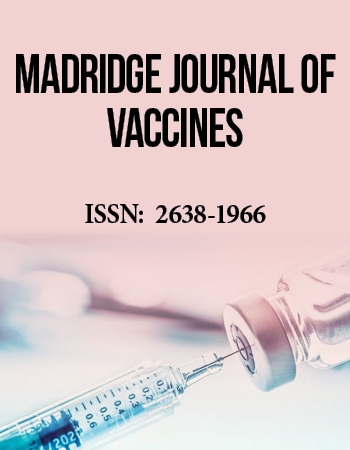International Conference on Vaccines
Feb 20-22, 2017 | Baltimore, USA
Documenting the need for routine Influenza vaccination in Kenya : A case of Influenza associated severe acute respiratory illness outbreak, nakuru country, Kenya
1Department of Health Services, Nakuru County, Kenya
2Nakuru County Referral Hospital, Kenya
3Njoro Sub County Health Office, Kenya
4Department of Health Services, Kenya
Severe Acute respiratory illness continue to be the leading cause of acute illnesses worldwide and remain the most important cause of morbidity in children less than one year. Influenza A and B viruses are among the most common causes of respiratory tract illnesses among children. Influenza surveillance in Kenya describes the incidence and prevalence of influenza among patients with ILI, SARI, and ARI. Influenza accounts for up to a quarter of ILI cases, a tenth of SARI cases and up to half of all ARI cases. Influenza vaccination is the main strategy of prevention, but influenza vaccination is not in the Routine immunization Schedule in Kenya. The purpose of this study therefore is to demonstrate the burden of influenza associated SARI and document the need for introduction of influenza vaccine into the routine immunization schedule. The study was conducted in Nakuru county referral hospital located in Nakuru County which is one of the 47 counties of the Republic of Kenya. A retrospective analysis of SARI outbreak data that was collected during the outbreak between March and June 2016. Case definition was used to identify cases. SARI cases were entered into an excel line list. Data Analysis was done using SPSS version 20. Chi square tests were used to establish association of relevant risk factors with the occurrence of influenza associated SARI. All confidence intervals (CI) were maintained at 95%. Statistical significance was defined at p≤ 0.05. The outbreak began in week 9 of 2016 in Nakuru North as epi centre and eventually spread to the entire County. A total of 823 cases with 94 deaths were reported. All sexes were equally affected. Children less than 2 years were mostly affected and high mortality recorded amongst children less than one year.
Nasopharyngeal swabs samples were analysed in 5 laboratories. Results indicated that 42% were as a result of RSV, 30% influenza A and B, 12% did not yield any pathogen and the rest were as a result of other viruses. Important risk factors identified included Co-morbidities (X2 1716.7, p 0.000), non vaccination with influenza vaccine X2 1702, p 0.000) and malnutrition (X2 1379, p 0.000). The prevalence of Influenza among sari patients is high, comobidities, non vaccination and malnutrition are the major risk factors. It is necessary to introduce influenza vaccine into routine immunization schedule and to carryout another study to determine the prevalence of malnutrition and associated factors so as to form the basis for intervention.
Biography:
Elizabeth kiptoo is a holder of Master of Public health Epidemiology and disease control at the age of 43 years from Mount Kenya University. Has worked in the field of public health for the last 22 years. She is a member of faculty associate of Mount Kenya University. A young researcher who has published two papers in reputed journals.


